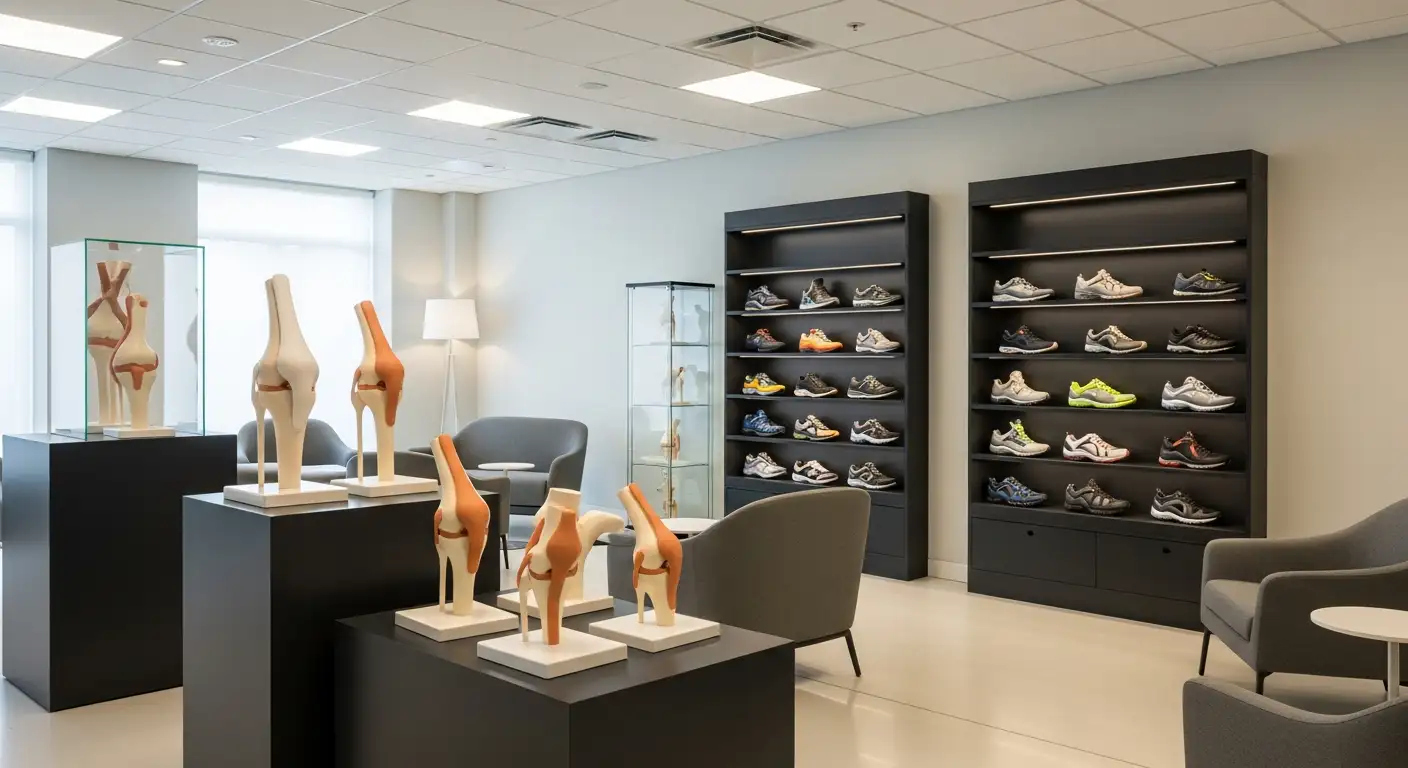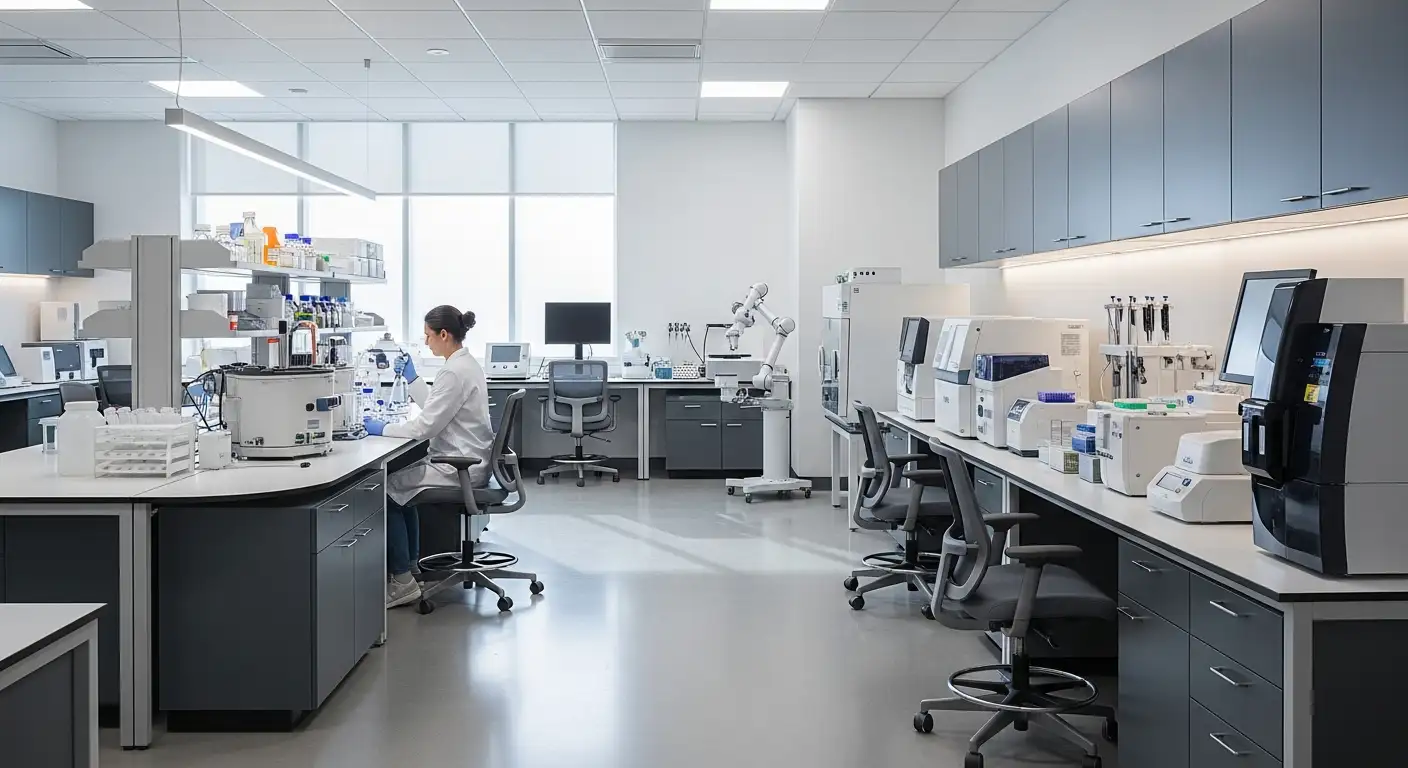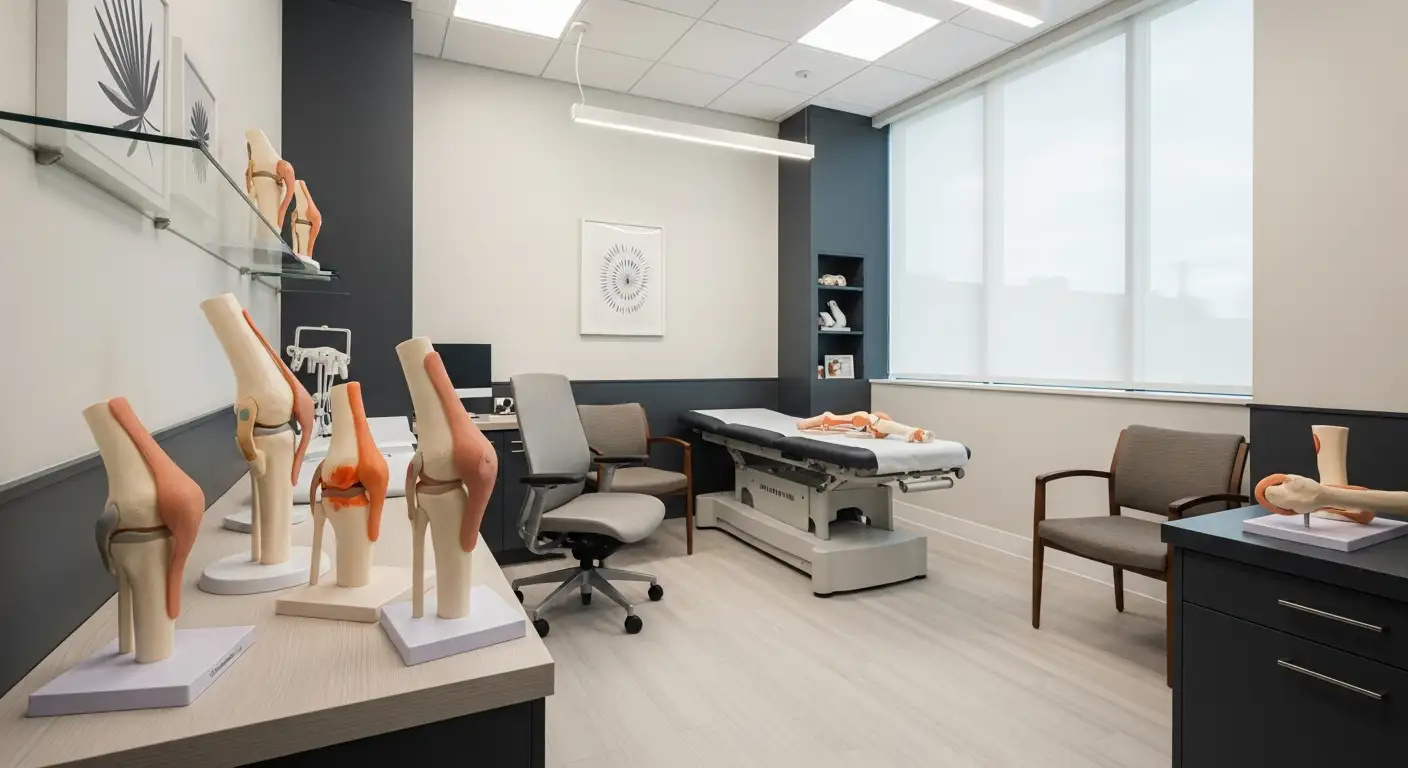Introduction to Knee Pain in Athletic Pursuits
Knee pain is among the most common complaints in athletic populations, affecting performance and long-term joint health. Whether caused by traumatic injuries or chronic overuse, managing knee pain is crucial for athletes to maintain their competitive edge and overall mobility. This article explores the causes, treatments, and recovery strategies tailored for athletes experiencing knee pain, helping them return stronger and safer.
Knee Injuries and Osteoarthritis in Athletes
- Patellofemoral pain syndrome (PFPS) causes knee pain in young athletes, worsened by overuse and improper alignment.
- Contributing factors to PFPS include weak quadriceps, tight hamstrings, and poor footwear affecting knee stability.
- Prevention of PFPS involves strengthening lower body muscles, proper footwear, technique, and rest to avoid overuse.
- Common traumatic knee injuries in athletes include ACL tears, meniscus injuries, and bursitis, caused by overstress or trauma.
- Symptoms of knee injuries involve swelling, instability, pain, mechanical sensations, and difficulty bearing weight.
- Preventive measures include neuromuscular training, proper technique, protective gear, and muscle conditioning.
- Knee osteoarthritis (OA) leads to pain, stiffness, swelling, and decreased motion, especially in athletes with prior knee injuries.
- Diagnosis of knee OA is through physical exam and imaging like X-rays revealing cartilage loss and joint changes.
- Emerging treatments like genicular artery embolization (GAE), PRP, and stem cells aim to reduce inflammation and promote tissue repair.
- Surgical options, such as knee replacement, are considered when conservative treatments fail, tailored to the disease extent and patient factors.
1. Young Athletes and Patellofemoral Pain Syndrome: Causes and Prevention
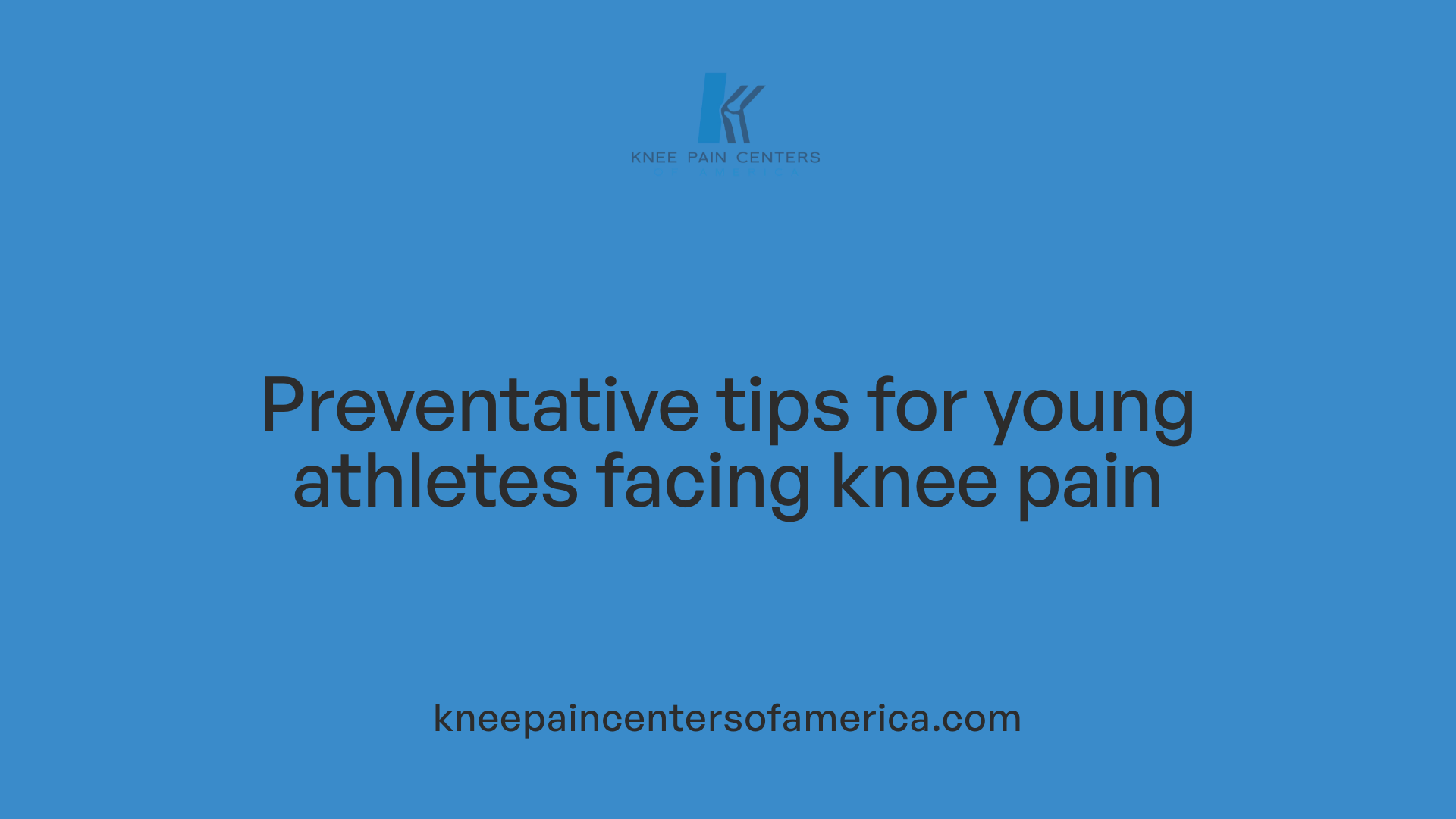
What is Patellofemoral Pain Syndrome in Young Athletes?
Patellofemoral pain syndrome (PFPS) is a frequent source of knee pain among young athletes. This condition manifests as pain around the kneecap, which often worsens with physical activity, especially during movements like running, jumping, or climbing stairs. The discomfort typically results from overuse or improper knee alignment, affecting the joint's ability to handle repeated stress.
What Contributes to PFPS?
Several physical factors can increase the risk of developing PFPS. Weak thigh muscles, particularly the quadriceps, reduce knee stability. Tight hamstrings limit mobility and add undue strain around the knee. Poor foot support, such as flat feet or inadequate footwear, can alter leg alignment, further stressing the kneecap. These factors create an imbalance that promotes irritation and pain around the knee joint.
How Can PFPS Be Prevented?
Preventing PFPS involves a combination of strengthening, supportive equipment, and careful management of activity. Strengthening the lower body muscles, including quadriceps, hamstrings, and calves, helps stabilize the knee and absorb impact more effectively. Wearing shoes that provide good arch support and cushion can improve foot alignment and reduce stress on the knee.
Why Is Proper Technique Important?
Maintaining proper technique and good form during sports activities significantly reduces knee stress. Coaches and trainers should emphasize correct movement patterns, such as proper landing mechanics and tracking of the knee over toes, to minimize injury risk.
What Role Does Rest Play?
Rest and recovery are critical for knee health, especially in preventing overuse injuries like PFPS. Scheduled rest days allow inflamed tissues to heal and reduce cumulative strain. Ignoring pain and overtraining can worsen symptoms, prolong recovery, and increase the likelihood of chronic issues.
By addressing muscle strength, flexibility, footwear, technique, and rest, young athletes can effectively manage and prevent patellofemoral pain syndrome, keeping them on the field and performing at their best.
2. ACL Injuries and Knee Trauma in Competitive Athletes: Diagnosis and Recovery
Common Traumatic Knee Injuries in Athletes
Competitive athletes frequently suffer from knee injuries such as ACL tears, meniscus injuries, and bursitis. The anterior cruciate ligament (ACL) is often injured during sudden stops or directional changes, whereas meniscal tears generally arise from twisting motions. Bursitis typically results from direct impacts leading to inflammation and swelling around the knee.
How Do These Injuries Occur?
ACL tears commonly occur due to overstretching or sudden movements that place extreme force on the ligament. Meniscal injuries stem from rotational forces or direct trauma, and bursitis usually follows a direct blow to the knee area.
Recognizing Symptoms
Injured athletes may experience symptoms including swelling, painful or restricted knee bending, feelings of instability, difficulty bearing weight, and mechanical sensations such as clicking or catching in the knee joint.
Preventive Measures
Neuromuscular training and muscle conditioning focus on strengthening the quadriceps, hamstrings, and calf muscles to stabilize the knee. Proper technique and maintaining good form during sports activities also reduce injury risk. Protective equipment such as knee pads provides additional defense against impact injuries.
Treatment Options
Initial management includes rest, ice, compression, and elevation (RICE) alongside anti-inflammatory medications. Partial ligament tears may heal with conservative treatment; however, complete ACL tears often require surgical repair. Physical therapy is vital for rehabilitation, emphasizing muscle strengthening and restoring joint stability to facilitate a successful return to sport.
The Role of Physical Therapy
Therapy includes targeted exercises to rebuild strength around the knee, manual therapy to improve joint mobility, and neuromuscular training to correct biomechanical imbalances. This comprehensive approach ensures enhanced knee stability and helps prevent future injuries.
3. Managing Knee Osteoarthritis in Aging Athletes: Treatments and Support
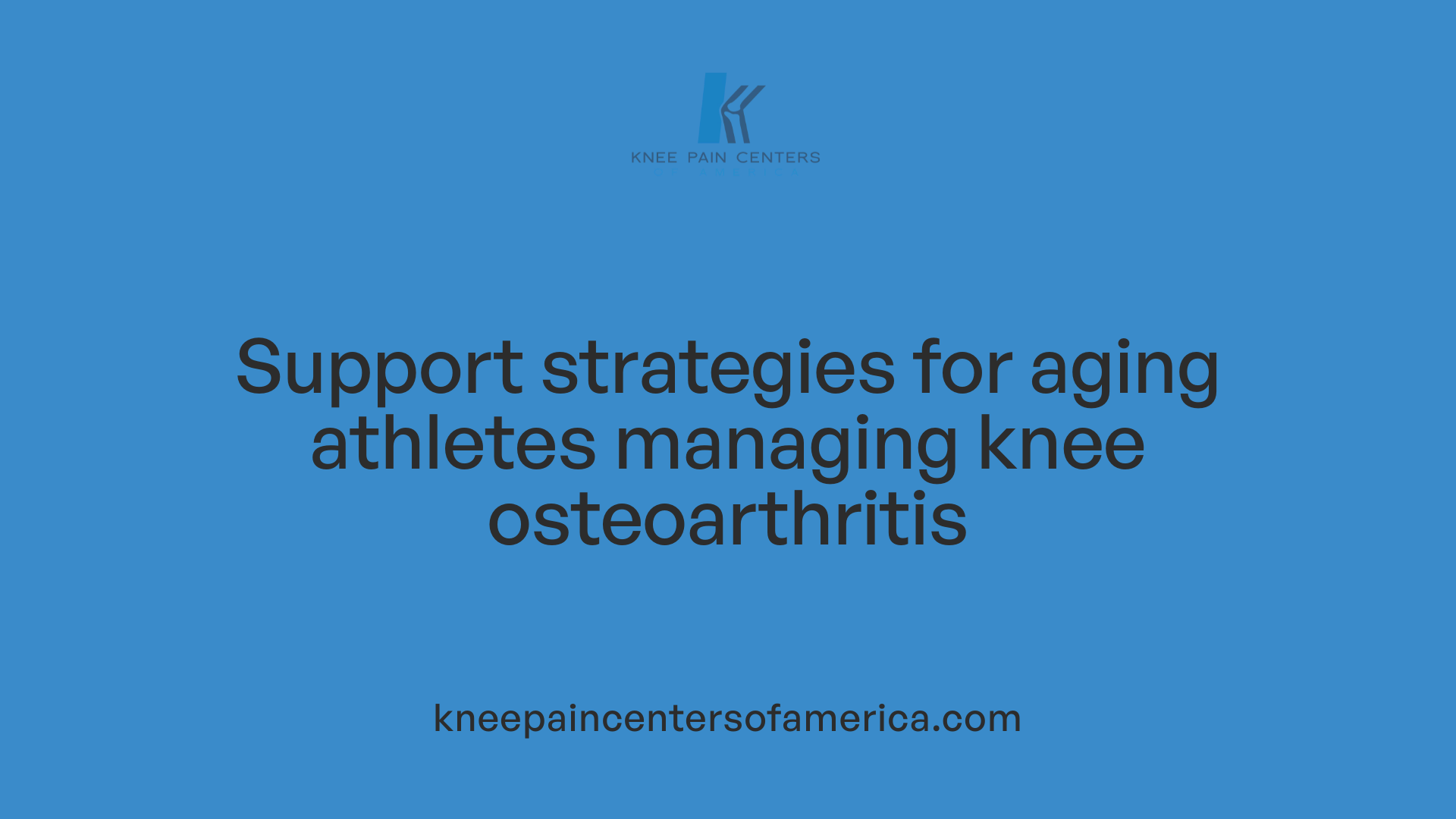
How does knee osteoarthritis impact aging athletes?
Knee osteoarthritis (OA) commonly affects athletes, particularly those with prior knee injuries. The condition leads to cartilage degeneration, causing symptoms such as joint pain, stiffness, swelling, and reduced range of motion. These issues can significantly impair athletic performance and daily function.
How is knee osteoarthritis diagnosed?
Diagnosis begins with a clinical assessment focusing on symptoms and physical examination. Imaging techniques like plain radiography (X-rays) are standard tools to confirm cartilage wear and joint changes. Advanced imaging may help evaluate the extent of joint damage.
What non-surgical treatments are effective for knee OA?
Managing knee OA involves a comprehensive approach including:
- Physical therapy: Manual therapy and joint mobilization improve motion and reduce pain.
- Low-impact aerobic exercises: Activities such as walking, cycling, and swimming help maintain function without stressing the joint, with aquatic exercises especially useful for patients with joint loading issues.
- Weight management: Losing excess weight reduces joint load and inflammation.
- Supportive devices: Proper footwear, taping strategies, and possibly braces optimize joint alignment and relieve stress.
What are the latest medical treatments available?
Emerging therapies such as genicular artery embolization offer pain relief by reducing abnormal blood flow that may contribute to inflammation. Biologic injections, including platelet-rich plasma (PRP) and stem cells, are being explored to promote cartilage healing and reduce symptoms.
When are surgical interventions considered?
Surgery, including total knee arthroplasty (replacement), is typically reserved for advanced OA where conservative measures fail to control pain and functional decline. Modern techniques like minimally invasive and robotic-assisted surgeries enable more precise procedures and faster recovery.
How important are individualized rehabilitation and gait modification?
Customized rehabilitation programs tailored to the athlete’s needs help maintain performance and prevent further joint damage. Gait modification and neuromuscular training can reduce joint loading during activities, thereby managing symptoms and slowing disease progression.
Common Symptoms and Causes of Knee Osteoarthritis
What are the common symptoms and causes of osteoarthritis in the knee?
Osteoarthritis (OA) in the knee often presents with several telling symptoms. Patients typically experience joint pain that intensifies with activity, stiffness especially noticeable in the morning or after periods of rest, and swelling around the knee. Additionally, creaking or grinding sounds when moving the knee and decreased range of motion are frequent complaints. These symptoms result from the progressive loss of cartilage cushioning the knee joint, leading to bones rubbing together.
The causes of knee OA are varied but commonly include age-related cartilage wear and tear. Prior injuries to the knee, such as ligament tears or meniscal damage, significantly raise the risk. Obesity contributes by placing extra stress on the joint, accelerating cartilage breakdown. Genetic factors may predispose some individuals, and repeated joint stress from high-impact sports or activities also plays a role.
Diagnosis of knee osteoarthritis generally starts with a thorough physical exam assessing joint function and pain points. Imaging, particularly X-rays, is crucial to confirm the diagnosis by revealing joint space narrowing, bone spurs, and other characteristic changes.
Complications of knee OA include the development of bone spurs (osteophytes), which can contribute to joint pain and stiffness, as well as joint instability from weakened supporting structures. Over time, cyst formation within the bone near the joint can also occur, complicating the condition further.
This multi-factorial condition requires a comprehensive approach to management, emphasizing early detection to slow progression and maintain joint function.
Latest Medical Treatments for Knee Pain and Osteoarthritis

What are the latest medical treatments available for knee pain and osteoarthritis?
Recent advancements have introduced minimally invasive procedures like genicular artery embolization (GAE) to the management of knee osteoarthritis and pain. GAE works by blocking blood flow to the inflamed vessels around the knee joint, reducing inflammation and pain. This procedure is performed using imaging guidance to precisely target affected blood vessels. Clinical results show that over 60% of patients experience significant pain relief lasting at least one year. This technique not only manages symptoms but also addresses the underlying inflammatory pathways contributing to the disease, potentially delaying or even preventing the need for knee replacement surgery.
Alongside GAE, biologic injections such as platelet-rich plasma (PRP) and stem cell therapies continue to play a role in treatment. These biologics aim to promote tissue repair and reduce inflammation, thus complementing other therapies.
Pain management improvements combine appropriate medication regimens with tailored physical therapy programs. This integrated approach enhances overall outcomes by improving joint function and reducing discomfort.
The major advantage of these less invasive options lies in their suitability for patients with moderate to severe osteoarthritis who may not be ideal candidates for traditional surgery. They offer reduced recovery times, lower risk profiles, and can preserve joint structure longer, providing effective relief and improved quality of life.
| Treatment Type | Mechanism | Benefits |
|---|---|---|
| Genicular Artery Embolization (GAE) | Blocks blood flow to inflamed vessels | Significant pain relief, delays surgery |
| Platelet-Rich Plasma (PRP) | Promotes tissue healing | Reduces inflammation, supports regeneration |
| Stem Cell Therapy | Stimulates cartilage repair | Enhances joint function, slows degeneration |
| Combined Medication & PT | Pain control and strengthening | Improves mobility and reduces symptoms |
Effectiveness of Non-Surgical Treatments for Knee Osteoarthritis
How effective are non-surgical treatments for managing osteoarthritis of the knee?
Non-surgical approaches play a crucial role in managing knee osteoarthritis (OA) by reducing pain, improving joint function, and delaying disease progression. Physical therapy is fundamental, focusing on exercises that strengthen the quadriceps, hip abductors, and other muscles supporting the knee. This increased muscle strength helps stabilize the joint and lessen stress on damaged cartilage.
Weight management is also essential; losing excess weight significantly decreases the load on knee joints, reducing pain and slowing cartilage wear. Low-impact aerobic exercises such as walking, cycling, and swimming improve cardiovascular health and joint mobility without exacerbating symptoms. Aquatic exercise, in particular, is ideal for those with significant joint stress or obesity.
Pharmacologic treatments include nonsteroidal anti-inflammatory drugs (NSAIDs) and corticosteroid injections, which provide short-term relief from inflammation and pain. However, these do not modify the disease course. Hyaluronic acid injections may also be used to enhance joint lubrication.
Supportive devices like knee braces and orthotic inserts optimize joint alignment and help reduce mechanical stress during daily activities and sports. They enhance comfort and mobility, complementing other therapies.
Alternative treatments such as acupuncture have been shown to offer additional pain relief for some patients and may be employed as part of a holistic management plan.
Though these non-surgical interventions do not cure knee OA, they effectively manage symptoms and improve quality of life while potentially delaying the need for surgical procedures like knee replacement.
Role of Physical Therapy in Managing Knee Pain and Osteoarthritis
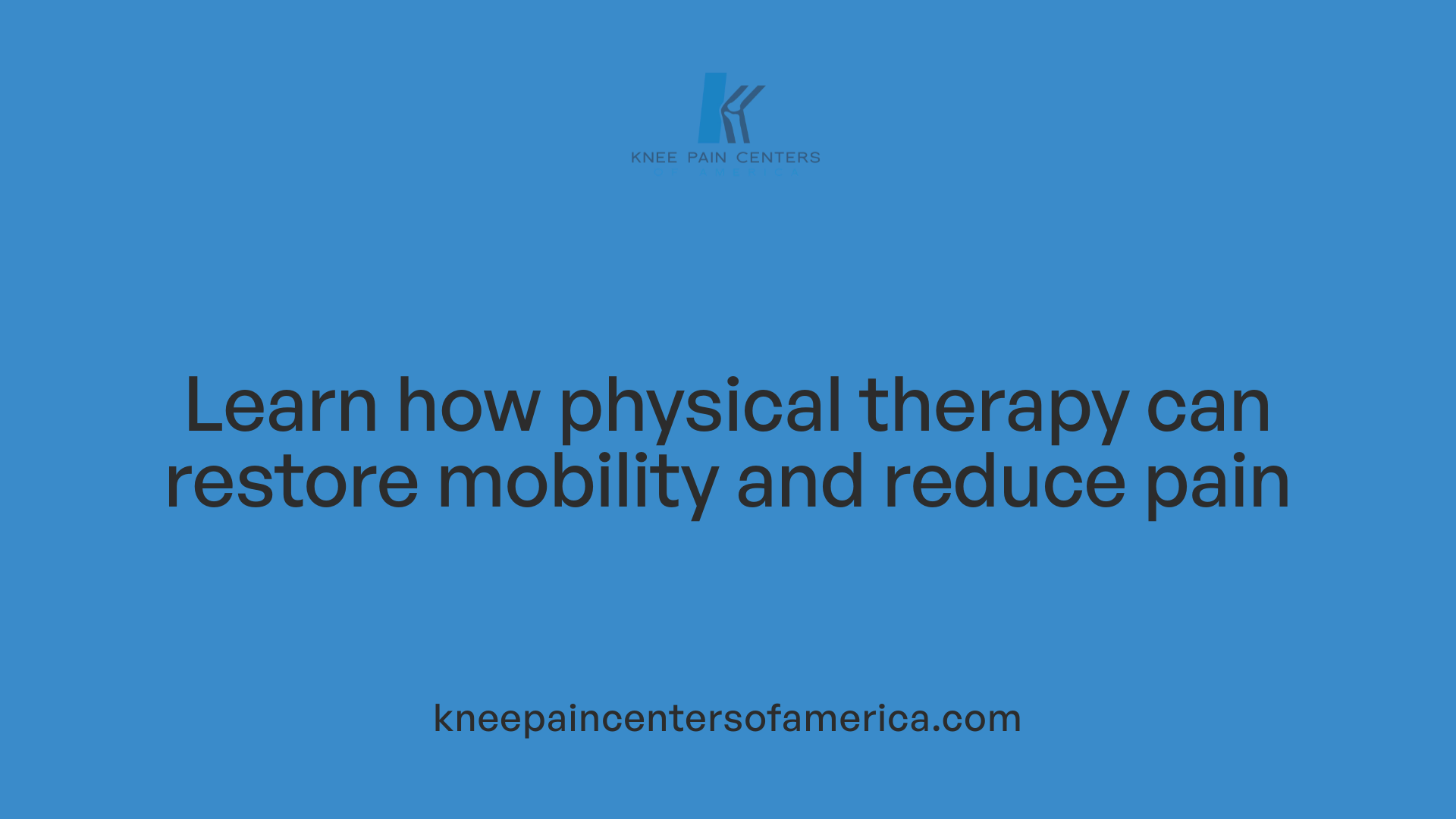
What role does physical therapy play in the treatment of knee pain and osteoarthritis?
Physical therapy is essential for managing knee pain and osteoarthritis by offering personalized exercise programs that target strengthening muscles around the knee, including the quadriceps, hamstrings, and hip abductors. These exercises improve joint stability and help reduce pain, promoting better mobility.
Manual therapy and range-of-motion exercises are also critical components. Techniques such as joint mobilization enhance flexibility, decrease stiffness, and restore functional movement, which contributes to pain relief and improved knee function.
Activity modification strategies, like gait training, bracing, and pacing daily activities, help to unload stressed joints and protect cartilage from further damage. These interventions reduce mechanical strain on the knee during sports and daily routines.
Evidence shows that early and supervised physical therapy can significantly reduce symptoms, improve function, and slow the progression of osteoarthritis. These benefits may delay more invasive treatments, including surgery.
Moreover, physical therapy often includes education on weight management to further decrease joint load, thus enhancing overall outcomes and quality of life for individuals with knee osteoarthritis.
In summary, physical therapy is a cornerstone non-surgical approach that improves symptom control and functional capacity while helping to preserve knee joint health over time.
When Surgical Intervention is Needed for Knee Osteoarthritis

When is surgical intervention recommended for knee osteoarthritis?
Surgical intervention for knee osteoarthritis (OA) is generally considered when conservative treatments fail to ease pain or improve joint function. These non-surgical options include medications, physical therapy, weight management, and injections. Surgery becomes necessary when the OA progresses to a stage where pain and limited mobility significantly reduce quality of life and daily activities.
Types of knee surgeries for osteoarthritis
The two main surgical options for knee OA are total knee arthroplasty (TKA) and unicompartmental knee arthroplasty. TKA replaces the entire knee joint and is the definitive solution for advanced degenerative disease. Unicompartmental procedures are less invasive and target only the damaged compartment of the knee, making them suitable for localized OA. However, unicompartmental arthroplasty may have a higher risk of future revision surgeries.
How does patient selection impact surgery?
Choosing the right candidates for surgery depends on multiple factors including age, activity level, overall health, and degree of joint damage. Younger and more active patients might initially explore less invasive options, while those with advanced disease and functional limitations may benefit most from TKA. Individualized patient assessment helps predict surgical success and recovery.
What are important considerations in surgical planning?
Surgical planning involves thorough preoperative evaluation to tailor the procedure to the patient's anatomy and needs. Surgeons consider factors like alignment, ligament stability, and presence of deformities. Advanced techniques such as robotic-assisted surgery and 3D modeling can optimize implant placement, enhancing outcomes and reducing complications.
What goals does knee surgery aim to achieve?
The primary goals of surgical intervention in knee OA are to relieve pain, restore joint function, improve mobility, and enhance overall quality of life. Postoperative physical therapy and rehabilitation are critical to achieving these outcomes and help patients return to daily activities and sports if applicable.
| Aspect | Details | Notes |
|---|---|---|
| Indications | Failure of conservative treatments, advanced pain, functional impairment | Quality of life impact is a major factor |
| Surgery Types | Total knee arthroplasty, unicompartmental arthroplasty | Choice depends on OA extent |
| Patient Selection | Age, activity level, health status | Key for surgical success |
| Surgical Planning | Preoperative assessment, use of advanced technology | Improves accuracy and outcomes |
| Surgical Goals | Pain relief, functional restoration, quality of life improvement | Requires ongoing rehab post-surgery |
Conclusion: Optimizing Knee Health for Athletic Longevity
Knee pain in athletes arises from a multitude of causes ranging from overuse syndromes in young athletes to degenerative osteoarthritis in aging competitors. Understanding the unique demands and risk factors that athletes face allows for targeted prevention, tailored treatment, and effective recovery strategies. Early intervention with physical therapy, appropriate conditioning, and adherence to rest protocols can prevent many injuries. For chronic conditions like osteoarthritis, a combination of advanced medical treatments, lifestyle modifications, and when necessary, surgery, can improve quality of life and prolong athletic participation. Staying informed and proactive about knee health is essential for athletes seeking long-lasting performance and mobility.
References
- Knee Pain in Athletes: Identifying and Managing the Causes
- Managing Knee Pain in Athletes: Tips and Strategies for ...
- Rehabilitation Strategies for the Athletic Individual with ...
- Knee Pain and Problems
- Sports Medicine Knee and Leg Pain: Injury Treatment ...
- Knee Pain: Causes, Diagnosis and Treatment
- Knee Pain & Sports Injuries: Recovery Techniques
- New Treatment for Osteoarthritis of the Knee
